What is Lifecycle Marketing- the whole concept?
When you run a company or organization, customers’ wants and needs become a pivotal factor, and basically, every business strategy is chalked out according to this only.
Customers’ needs and how the company works towards fulfilling them are the basis of the life cycle definition. In order to run a successful business, it is important to establish a customer relationship and enrich it with time and increase in resources as well.
It is a whole lot of process when a customer gets to know about your company and finally makes a purchase or avail of other services from it. Based on the company’s business strategies or what leverages the offer, a decision is made on behalf of the customer whether or not they’re going to be a personal customer.
Once they become customers, the chances are that they are going to promote your company and brand for it as well. This journey from a newbie customer is like a journal and is popularly referred to as the customer lifecycle.
This customer lifecycle lays its foundation at the first instance a potential buyer comes across your organization. Ever since the cycle starts, strategies behind attracting clients, retaining leverage, and bringing in the most revenue collectively contribute to lifecycle marketing.
All these strategies engage customers right from the beginning of the cycle till a purchase is made. All these strategies are adopted solely to ensure the number of repeating customers or constant purchases from many particular customers keeps coming in.
Why are repetitive customers so important?
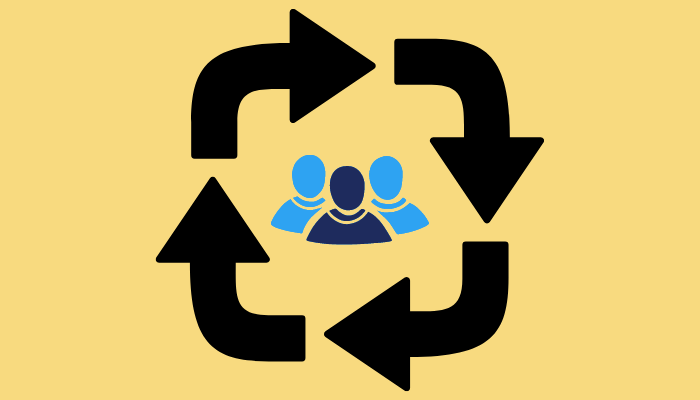
There is a common rule known as Pareto Principle in Business studies, also known as the 80/20 rule. It basically states that 80% of a company’s wealth is acquired from 20% of its customer base.
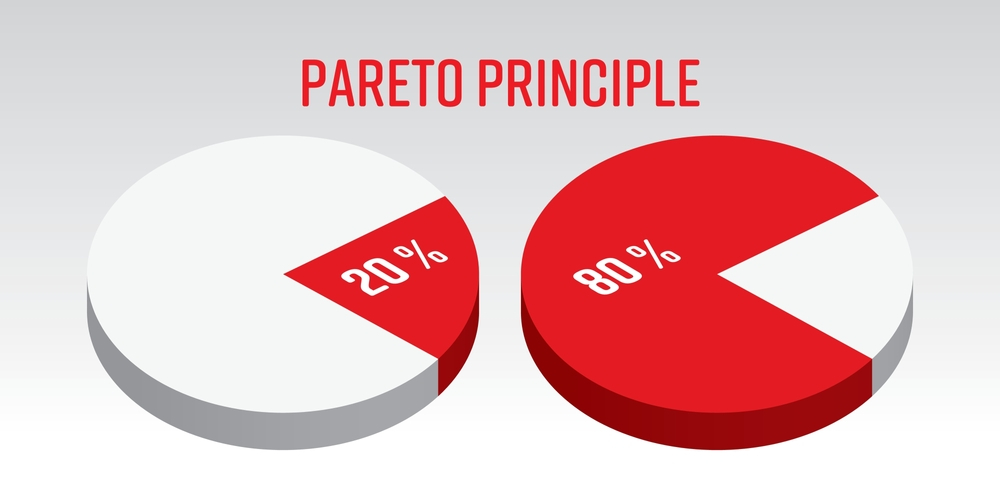
It brings us to why constant customers are needed and how lifecycle marketing is important for retaining such customers.
Edward Gothom, a UK-based business analyst, stated that
In addition to that, it is a known fact that to bring in new customers; an organization needs to spend 10 times the money spent on the selling process to pre-existing customers. Every customer’s needs are unique and different. So inevitably, the lifecycle marketing strategy needed to fulfill that must also be different.
This includes providing the further communication they aspire to see to trust the company and make a purchase time and again.
Customer lifestyle marketing strategy is based entirely on the experience a customer goes through when they set their eyes on the organization until they make a purchase. It follows a more customer-friendly stratum rather than a completely data-based, sales-oriented approach.
While making sure the sales remain high and the curves keep growing, the lifecycle marketing model has adapted a more personalized approach for dealing with customers. 2022 is an era when everything is just a click/tap away, and competition is high, so the customers must be content with the products and the leverages and other by-products.
Let’s see the steps to partake in a Lifecycle Marketing Strategy.
Lifecycle Marketing Stages
Lifecycle Customer Strategy gives a compact picture of the customer’s journey, as mentioned before- popularly known as from discovering a company to the first purchase from the same. There are several stages on completing which you can approach a successful lifecycle marketing strategy.
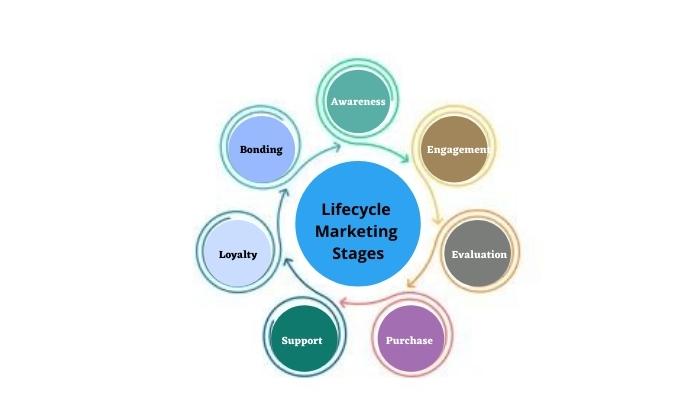
Awareness:
The very first step of lifecycle marketing starts when a customer gets to know about a certain brand. As time moves forward, consumers lean more towards quality content, so following a fixed customer journey protocol and guidelines are extremely important.
According to Forbes, 64% more shoppers are inclined to quality content over quantity and inevitably lean more towards the companies that follow the same guidelines and ethics.
The awareness stage is the reason why social media marketing has been spreading like wildfire, and organizations with competitive social media marketing strategies are soaring high. This is because, the age being run by apps like Instagram, people are more likely to come across your social media handle before getting to your website.
Engagement:
Engagement is the second step of the Lifecycle marketing strategy. This is the step that lays the foundation stone for user engagement, that is, when customers would visit your organization’s website. So it is crucial to put out satisfactory content that would automatically draw them to the websites and start the customer journey.
This step includes various strategies like Instagram or Facebook live, Q&A sessions, giveaways, et cetera that increase your organization’s reach and keep the customer engaged till a purchase is made.
Even if a customer doesn’t make a purchase, the visit to the website still increases the reach. This step is a one-to-one approach that leads to user engagement. A properly curated website, social media handle is very important for this stage as the process would ultimately lead the customer to the organization’s official website.
Evaluation and Purchase:
This step in the lifecycle marketing campaign denotes the part of the customer journey or customer lifecycle where the person ultimately makes a final decision, and a purchase is made. The customer is happy with the content and aim of the organization.
The most effective way that most organizations with a lifecycle marketing strategy adapt is- they provide their unique brand value and focus intently on building a relationship with the customer for a future purchase, rather than only fixating on sales number and data.
Support:
After a purchase is made, companies that follow a lifecycle marketing campaign try to engage the new customers to promote on their behalf on third-party websites and encourage them to help other customers with questions they might have. Instagram influencers promote on behalf of such organizations.
Also Read: B2B Influencer Marketing: The Ultimate Guide
The organization chooses one of its customers to use its social media reach and followers to promote its product. Public reviews are very much encouraged by organizations to increase user reach and increase customer engagement.
Loyalty and Bonding:
As mentioned earlier, building a customer relationship is one of the key points of lifecycle marketing strategy, so the customers keep coming back to purchase items from the organization. Lifecycle marketing campaigns focus more on repetitive customers than bringing in new ones.
It is more about the customer’s overall experience with the organization rather than just the purchasing part. Processes like follow-up emails from time to time, notifications, and messages about new arrivals and offers, thank you cards are many aspects of this particular step of lifecycle marketing.
Why Customer Lifestyle Marketing is chosen over B2B strategy- is sales funneling not trending anymore?
Another common strategy used in the market is the Business to Business or B2B marketing strategy based on sales funneling. It’s 2022, and it is widely regarded that B2B and sales funneling are obsolete now.
Even though few companies still adopt the B2B strategy and sales funneling, why are these strategies not that profitable anymore?
If an organization loses five customers every month, it should bring in six new customers to make up for the loss, tally the data, and maintain a steady curve. The main goal of the sales funnel is to ensure a strive towards more purchases from customers and hence increased revenue.
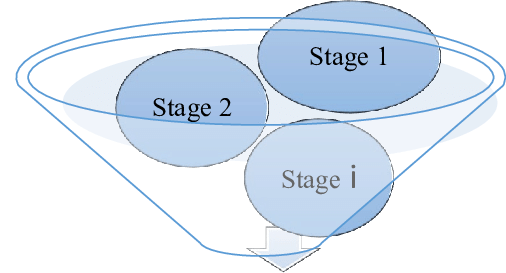
Source: https://www.researchgate.net/figure/Schematic-representation-of-the-sales-funnel-Source-authors_fig1_351233197
This is the schematic diagram of a sales funnel. Each step denotes the journey of a customer from the beginning to a buyer. However, B2B marketing, following a sales marketing strategy, works only towards gaining new customers. As you can see, these two strategies pay no heed to build customer relationships to ensure continuous purchases from them.
Concerning the funnel diagram, the customer is no longer the organization’s concern past the ‘Action’ stage, unlike Lifecycle marketing.
The question is, which strategy is better and should you choose?
The answer is, it depends on the ethics and goals of the organization. Suppose the aim is a rapid conversion from engagement to purchasing, ushering more new customers in a small amount of time with paid ads and promotions. In that case, you should implement a B2B strategy and sales funneling.
However, suppose a company wants to flourish in the long run. In that case, lifecycle marketing strategies should be opted for because building customer relationships to ensure more repetitive customers takes up more time after the initial business is done.
The Goals of Lifecycle Marketing
The objectives are fairly straightforward – to engage your consumers and keep them active. Goals like –
- Prospects for new customers for the first time.
- Sustain new customers and convert them to regular customers.
- Convert regular customers to long-term customers.
- Get disengaged users back and engage them again.
- Contact and provide all support to all the users.
- Enhance the user’s customer lifetime value.
- Boost in Return on Investment (ROI).
Also Read: How to measure ROI through Email Marketing
Lifecycle Marketing Strategy
The best strategies are how customers interact throughout the customer’s life with your brand’s product. Regardless of size, at every stage in lifecycle marketing, strategy is mainly content. 70% of advertisers spend significantly on content marketing (HubSpot, 2020), and if one does not develop appropriate content for every stage, you can miss out on targeted clients (and profit). Steve Jobs said, “There’s just a tremendous amount of craftsmanship in between a great idea and a great product.” You must become strategic and link your sales to promotion aims rather than simply marketing to the masses. Let’s go into the tactics and strategies one can use in business at every stage of lifecycle marketing.
At Awareness Stage – (to draw people in the targeted audience)
- Create a targeted audience for each marketing goal to know the individuals you attract to meet your marketing goal.
- Research and utilize keywords that will assist consumers in finding your brand when they are looking online.
- Write blog articles that discuss frequent difficulties and answer relevant questions and challenges they may face.
- Share your services in a visually appealing way via paid or organic advertisements.
- Display a billboard or display ad in locations where your targeted demographic audience visit.
- Prepare a catchy advertisement for the podcasts if you know what your audience wants to hear. By 2020, Google’s search algorithms will attempt to move beyond text and include photos, podcasts, and videos. (HubSpot, 2020)
- Collaborate with celebrities or experts who the targeted audience follows to promote each other.
Although 67% of firms use lead generation as the only single metric to define content success, yielding customers spend 67% more than first-time buyers on average. So, one must remember to not focus on acquiring leads only.
At Engagement Stage – (Lead people to business websites or channels)
- Create appealing landing pages that are easy to browse.
- Video demonstrations of your product or services.
- Blog articles, guidelines, or design templates that address solutions to common queries of customers.
- A framework that provides deep research on business trends.
- Case studies that demonstrate the benefits of choosing your organization for the customer’s needs.
- Email campaigns to handle problems at an early stage, even before they happen.
In general, 83% of buyers who approach a company want immediate response or engagement. (HubSpot, 2020)
At Conversion Stage – (shift from a potential buyer into a customer)
- Business websites should provide reasonable and specific pricing and quality descriptions so that one can compare alternatives.
- Share customer feedback to inspire confidence after the sale.
- Make a demo or a free trial to build productivity in the whole investment.
- Send emails that solve any questions that the top target audience or leaders have to make sales easier.
- Improve your business’ after-sale services and magnify customer experience.
According to research, personalizing the customer experience increases conversion rates by approximately 8%. (HubSpot, 2020)
At Retention Stage – (shift from buyers to regular customers)
- Create simple support alternatives such as live chat, messaging, FAQ pages, and troubleshooting forums.
- Orientation and training solutions that make installation and set-up a hassle-free process.
- Provide a coupon, voucher, or discount for a future purchase.
- Launch a new product or service with an interesting campaign – you can even give current customers early access.
- Target Ads with complementary goods. (car – main product, car insurance ad)
- Emails to customers informing them of updates or methods to improve their existing purchases.
At Loyalty Stage – (customers talking about your brand to others)
- Exclusive in-app or membership.
- Rewards for giving feedback and recommendations like a discount or free goods.
- Events and e-webinars with brand team members or industry professionals.
- Referral schemes for customers who attract new consumers.
- Use social media mechanisms to enhance brand exposure.
- Campaigns to reactivate disengaged consumers.
Lifecycle Marketing Campaigns/ Lifecycle Marketing Examples
It can be difficult to create advertisements at each stage of the lifecycle. However, a campaign does not need to be complicated to be efficient. Recognize the goal of your campaign. You can strive to recruit new consumers, keep existing customers, establish loyalty, engage alienated customers, or boost customer lifetime value. You can strive to recruit new consumers, keep existing customers, establish loyalty, engage alienated customers, or boost customer lifetime value. Goals will aid you to focus on one stage at a time or to look across the entire lifecycle to find solutions to improve actions at each stage.
Awareness Campaign:
When you google the top 10 places to visit in Mumbai, the first ranked website is “FabHotels.” It is a website to book the best budget-friendly hotels. It also has blog articles about the 39 Best Places to Visit in Mumbai to make the most of your trip. You can book hotels within Mumbai with a few clicks by using FabHotels.
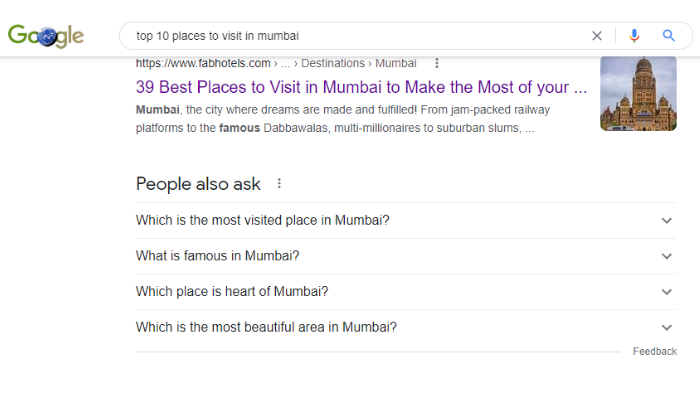
Engagement Campaign:
FabHotels engage their visitors by providing various guides on traveling. Blog articles like “Top 31 Things to do in Bangalore”, “Avoid These 10 Mistakes for a Blissful Trip”, “Top 25 Malls in India – Cathedrals of Shopping,” and many more at https://www.fabhotels.com/blog
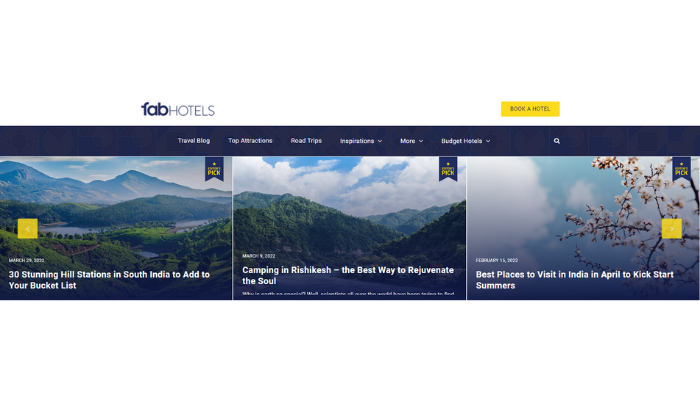
Conversion Campaign:
After reading blog articles, ratings and reviews, one can book a hotel by clicking on Book Now. Select the dates, number of guests, and your preferred hotel.
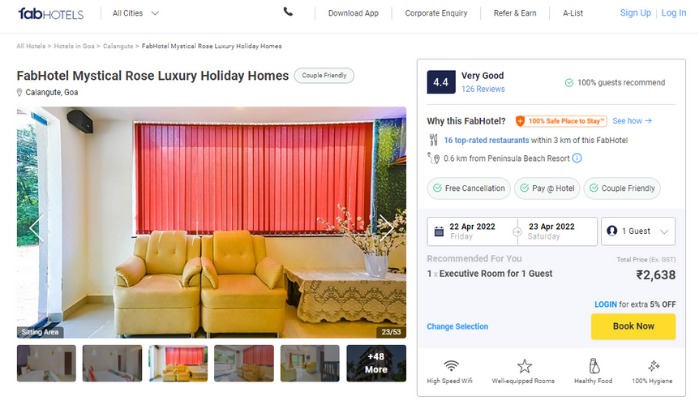
Retention Campaign:
To retain the existing customer, FabHotels offer you the best deals by subscribing to their newsletter. You will receive customer-based deals, exciting offers, and discounts. Also, it will send you their latest blog articles related to common challenges that one could face while finding hotels.
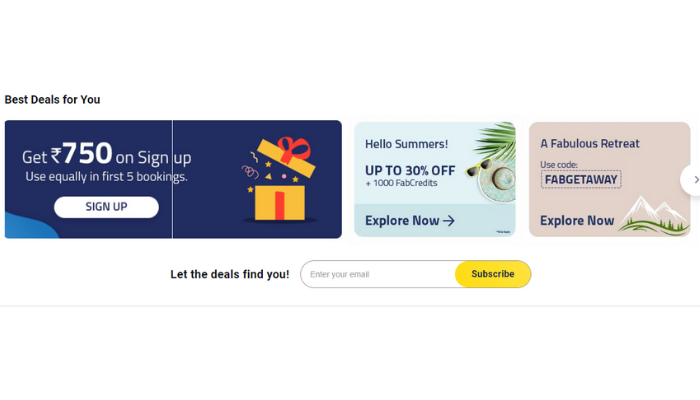
Loyalty Campaign:
FabHotels have a refer and earn program where existing customers can get discounts if they refer more people to book a hotel via FabHotels on https://www.fabhotels.com/refer-and-earn. You can also become a member of their A-list Loyalty Programme, where you can get regular deals.
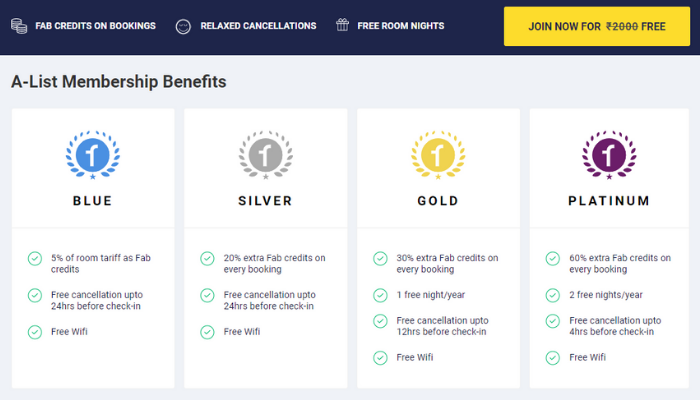
Lifecycle Email Marketing
A business can use email newsletters to engage its customers, but at the same time, the business shouldn’t flood customers with a lot of emails. Emails should also have a targeted audience. Customers should open your emails, and for that, make sure that your emails are interesting and exciting to open. The average email clickthrough rate is approximately 18%, implying that many conversations go unopened and neglected.
How to ace at Email Marketing
- A/B testing of the subject and content of emails.
- A good preview of Emails.
- Test the flow, day, and time of day to when emails should be tested.
- Personalize emails by mentioning the reader’s name.
- Send emails from a specific team member or employee at your organization to enhance personalization.
- Create a targeted audience for specific newsletters, articles, and blogs.
- Send emails with a clear CTA.
- Emails should include eye-catching graphics, layout, images, and videos.
Let’s look at how businesses can use email to run lifecycle marketing initiatives –
For Awareness: Welcome Emails when a customer sign’s up for newsletters.
For example, IKEA’s welcome email notifies about one of the latest blogs, new catalog products, and, perhaps most impressively, the stores nearest to one’s Pincode.
For Engagement: Engaging audience with blogs, offers, discounts.
For example, Airbnb (temporary stay at customer-owned houses business) emails with personalization, suggesting places to visit and ways to use Airbnb for users to use homes to stay for vacation in houses owned by people. Airbnb is a substitution for booking hotels.
For Conversion: Call to Action emails to make customers buy/use your products /services.
For example, Swiggy (an online food delivery business) often sends emails to customers to order meals. It sends deals for customers to order food online like the Match Day Mania campaign.
For Retention: to retain the existing customers.
For example, Canva (an online graphic design tool) The Design School at Canva is an excellent illustration of this. The school offers tools, how-to manuals, and step-by-step videos to assist clients in using their products/services and improving their graphic design talents.
For Loyalty – to grant discounts to faithful consumers.
For example, Starbucks (coffee shop) Starbucks Rewards introduced via the Starbucks app; customers must buy or pay through the Starbucks app to earn loyalty stars. This method of unifying consumer transactions generates a lot of data about client preferences and behavior.
Final Takeaway
You understand the advantages, stages, and methods for incorporating lifecycle marketing into your company’s strategy. All that remains is to begin charting the cycle for your consumer requirements and monitoring your hired employees.
After you’ve put in the effort, marketing automation can help you save time by automating operations like putting up email campaigns, managing analytics, designing your SEO strategy.
You can study consumer lifecycle management or look to working with lifecycles at BizProspex if you want to learn more about retaining customers.
To get more information on Data mining services, Email marketing, Data annotation, Jobs feed data, Hiring Intent, Linkedin Data scraping, Google Map Scraping, Web scraping services, Contact https://www.bizprospex.com/.
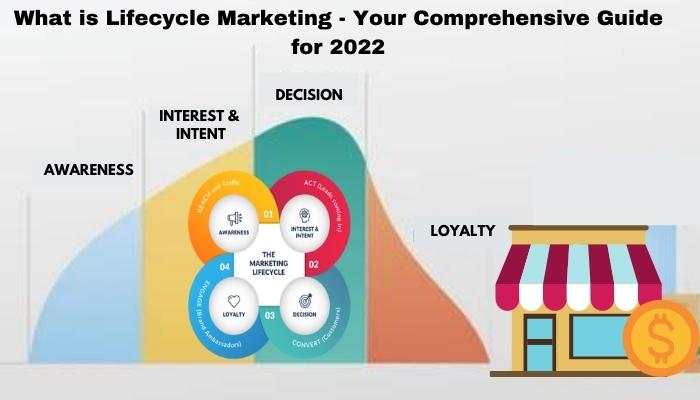
good article.
Great points. There’s no better confirmation than a word of mouth advertising from past customers, it will surely boost your brand’s reputation